Penguins are aquatic birds in the family Spheniscidae. This family contains six genera and around twenty species of extant penguins. Scientists often dispute the characterization of certain species versus subspecies.
All but one species of extant penguins live below the Equator. They live on four continents, and different species occupy various habitats and climates. While existing penguin species appear similar, each genus has unique characteristics.
Where Do Penguins Come From?
Penguins appeared in the fossil record more than 60 million years ago. This record contains many more extinct genera and species than currently exist, showing that the family Spheniscidae is complex and rich with variation from which modern species evolved.
Some students discovered a fossilized penguin in New Zealand on a beach. This new species was the size of a human and one of the oldest penguin fossils ever found. Scientists believe that toothy whales outcompeted these penguins for available prey.
Many fossilized penguin species have longer beaks that many researchers believe they used to spear their prey before eating it. The earliest penguin species coexisted with dinosaurs, and after the extinction event that killed the dinosaurs, these penguin species thrived.
What is the Distribution of Penguins?
Penguins are distributed on all continents south of the Equator, although Antarctica is home to most species throughout much of the year.
Penguins live in large breeding colonies in Antarctica, in the South American countries of Argentina, Peru, Brazil, and Chile, on and around Australia and New Zealand, and on the African continent in South Africa, Namibia, and Angola.
Most penguin species have declining populations and are considered Endangered, Near Threatened, or Vulnerable by the IUCN (International Union for Conservation of Nature).
Great Penguins
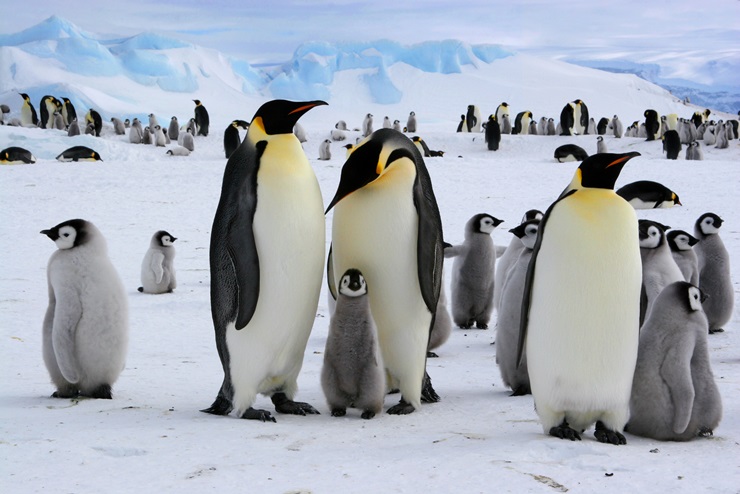
The Great Penguin genus contains the two largest extant species, the Emperor Penguin and the King Penguin. Both penguins live in Antarctica and occupy nearby islands in the South Atlantic and Indian Oceans.
The Emperor Penguin population is Near Threatened with a decreasing population, while the King Penguin population is of Least Concern, and the number of penguins is increasing.
Brush-tailed Penguins
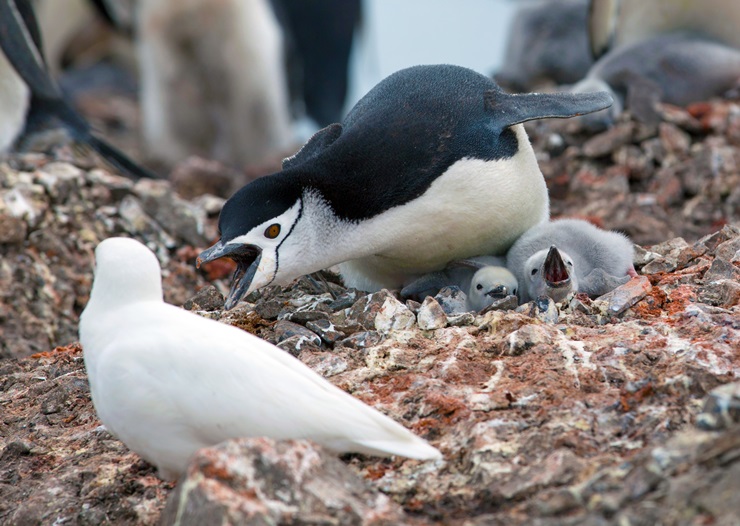
The Brush-tailed Penguin genus contains Adelie Penguins, Gentoo Penguins, and Chinstrap Penguins. All three penguin species live in Antarctica, but the Adelie Penguins only live in Antarctica.
The Gentoo and Chinstrap Penguins have breeding populations in Antarctica, the Falkland Islands, Argentina, and Chile.
All three of these species have an IUCN status of Least Concern. The Adelie Penguin population has increasing numbers of penguins, the Gentoo Penguins have a stable population, and the Chinstrap Penguins have a declining, moderately depleted population.
Little Penguins
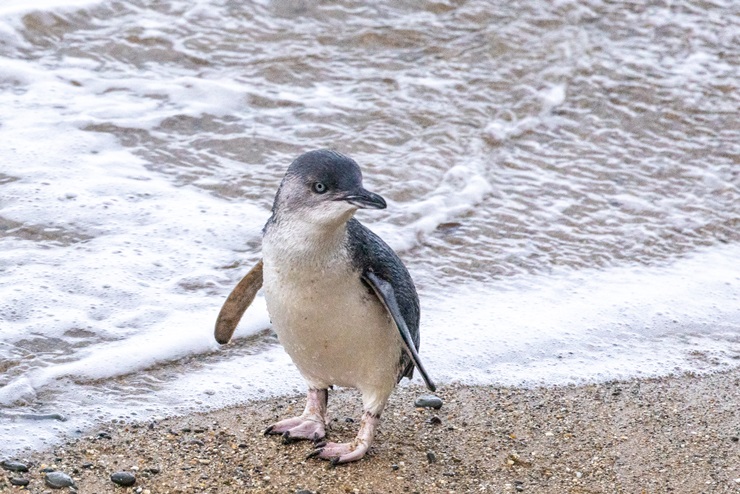
The Little Penguin genus contains two species, Little Penguins and the recently described Australian Little Penguins, which live in Australia and New Zealand. The Little Penguin and Australian Little Penguin species have stable populations and are of Least Concern.
Crested Penguins

The Crested Penguin genus contains the most extant species, with six or seven species, depending on how subspecies are categorized. These species include:
- Northern rockhopper penguin
- Southern rockhopper penguin
- Erect-crested penguin
- Macaroni penguin
- Fiordland penguin
- Snares penguin
- Royal penguin
Crested Penguins are the most widely distributed genus, with species living in Antarctica, South America, Australia, New Zealand, and South Africa.
The Endangered Northern Rockhopper and Erect-crested Penguins have declining populations. Fiordland Penguins are Near Threatened, also with a decreasing population.
Royal Penguins are of Least Concern with an unknown population status. Southern Rockhopper, Macaroni, and Snares Penguins have a Vulnerable population status.
While the Snares Penguin has a stable population, the Macaroni and Southern Rockhopper Penguins have declining populations.
Banded Penguins
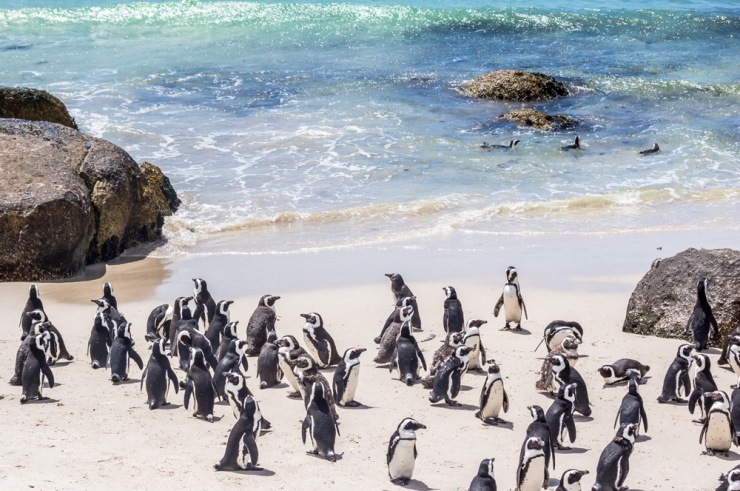
The Banded Penguin genus contains four species – the Galapagos penguin, African penguin, Magellanic penguin, and Humboldt penguin. The Galapagos Penguins are the only species located in the Northern Hemisphere.
African Penguins live in South Africa and Namibia, and their population is Largely Depleted. Magellanic Penguins live in South America in Argentina, Chile, Brazil, Uruguay, and the Falkland Islands. The Humboldt Penguins live in Peru and Chile.
The Endangered Galapagos and African Penguins have declining populations. The Magellanic Penguins are a species of Least Concern, while the Humboldt Penguins are Vulnerable. Both species have decreasing numbers of penguins as well.
Genus Megadyptes (Yellow Eyed Penguins)
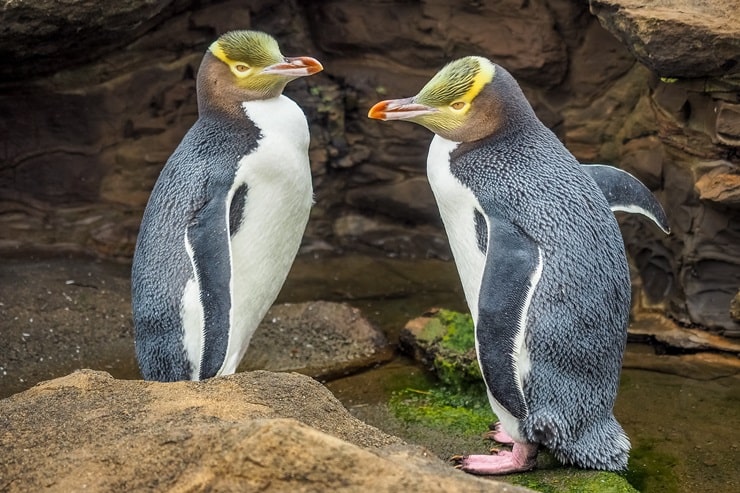
The Yellow-eyed Penguin is the only living species in the genus Megadyptes. This Endangered species lives in New Zealand and the surrounding islands. The Yellow-eyed Penguin population is declining, and only a few thousand individuals remain.
Also Read: Do Penguins Mate for Life
What Habitats Do Penguins Use?
Different species of penguins utilize different habitats for breeding, but all penguin species require the same rich, cool upwelling of ocean currents to find enough food to survive. All penguins feed on a mix of fish, krill, and cephalopods.
Some penguin species dive hundreds of feet underwater to feed, while others do not have to dive so deep to find sufficient food. Many penguin species migrate long distances, searching for food.
All penguins except Yellow-eyed Penguins breed in large colonies, where they socialize with each other while raising their young. Many penguin species create colonies containing thousands of birds or more.
In some species, the juvenile penguins gather in groups, or creches, during the day while the parents forage. When the parents return, they can find their juvenile based on the call it makes.
Two penguin species, King and Emperor Penguins, do not make a nest. They incubate their egg, and later the hatchling, on top of their feet. Other species build a pile of rocks, scrape a depression in the ground, or dig out burrows in soft soil.

